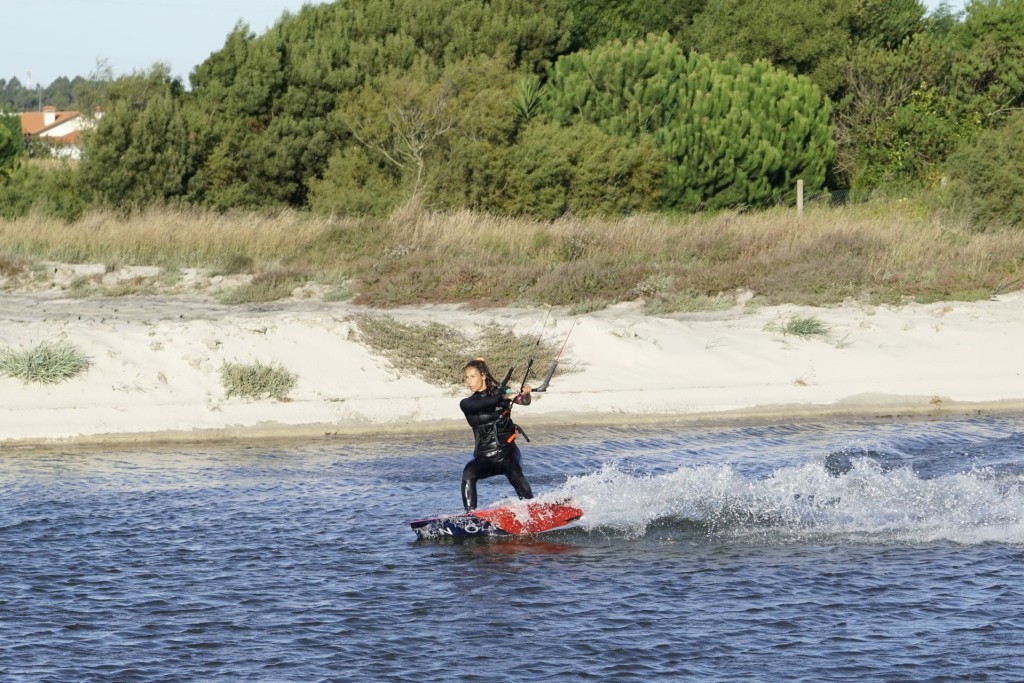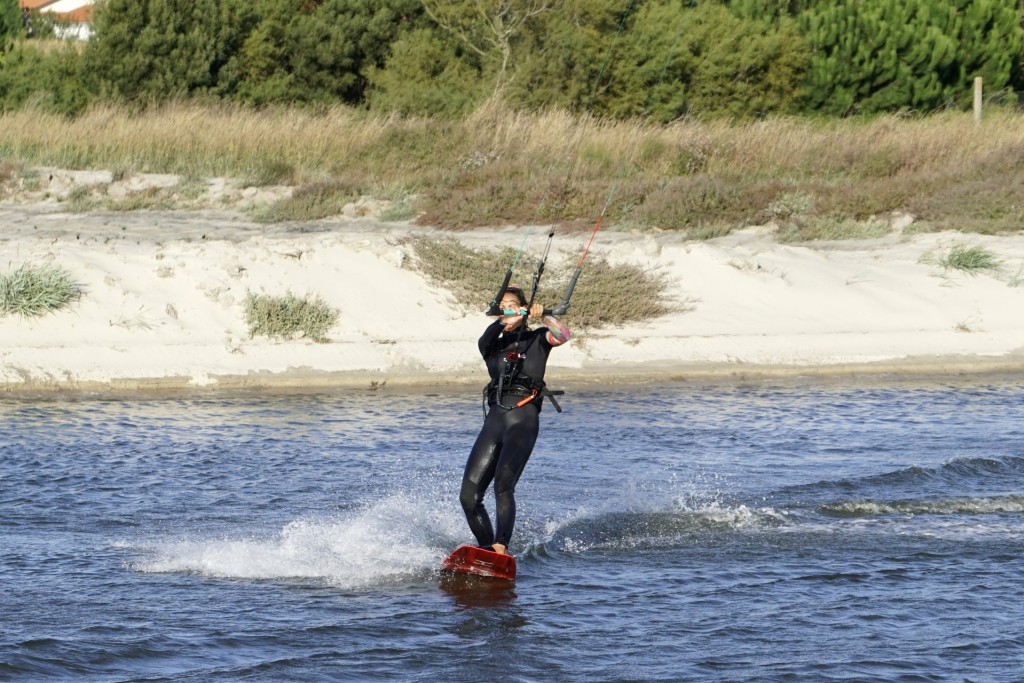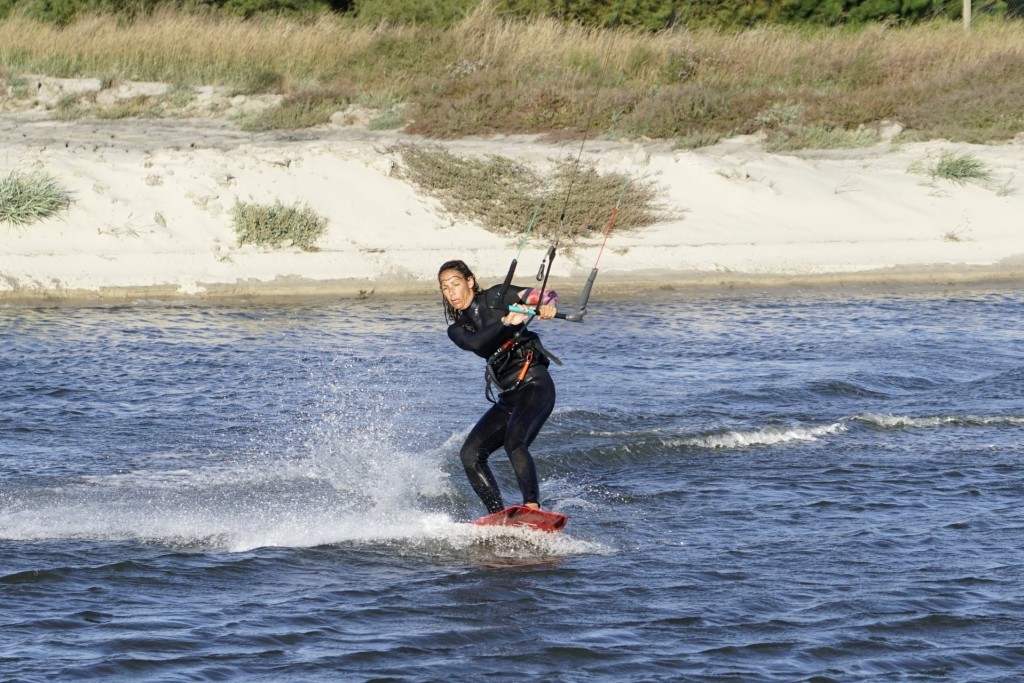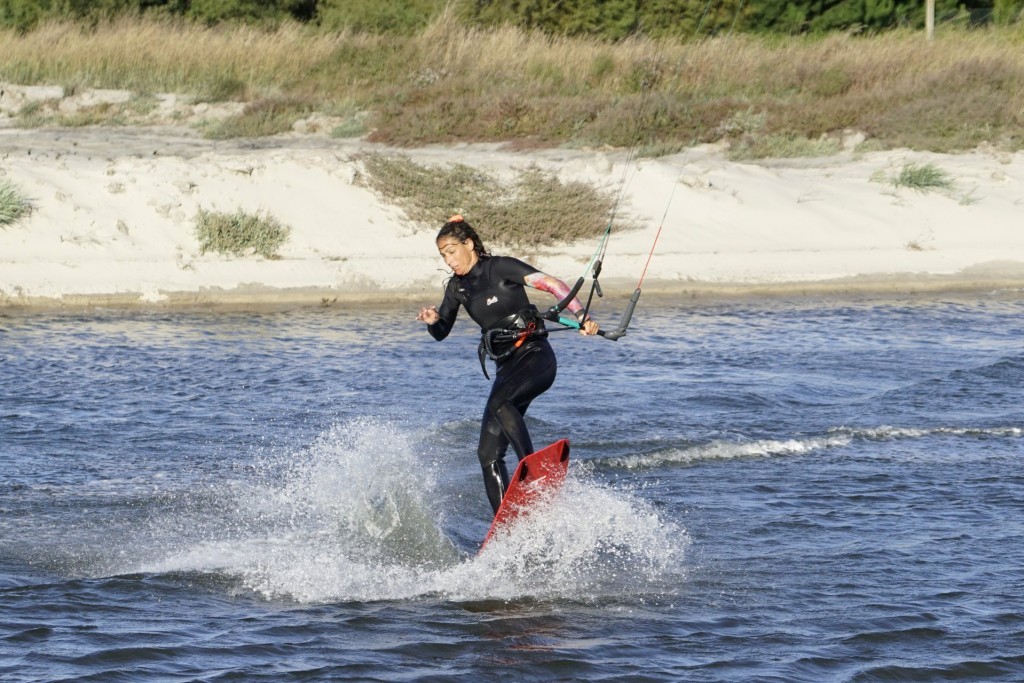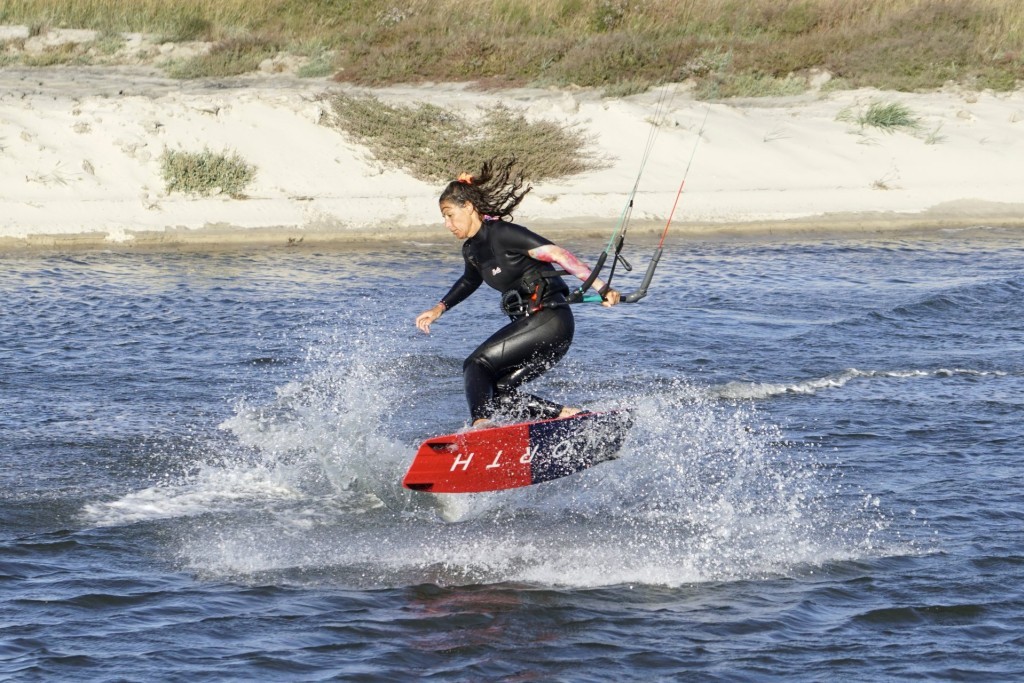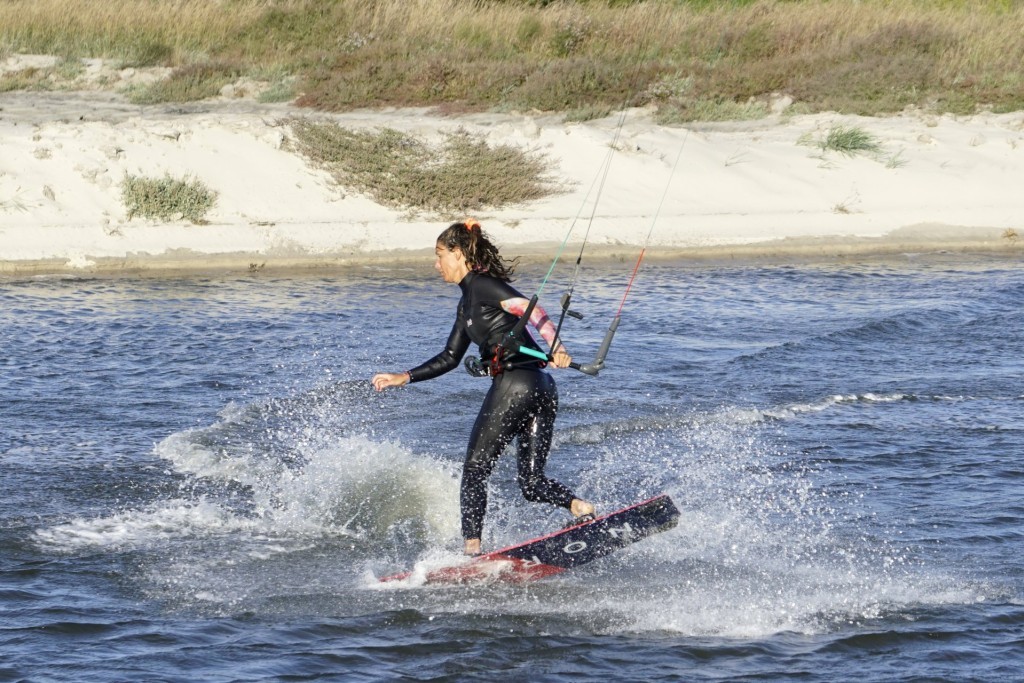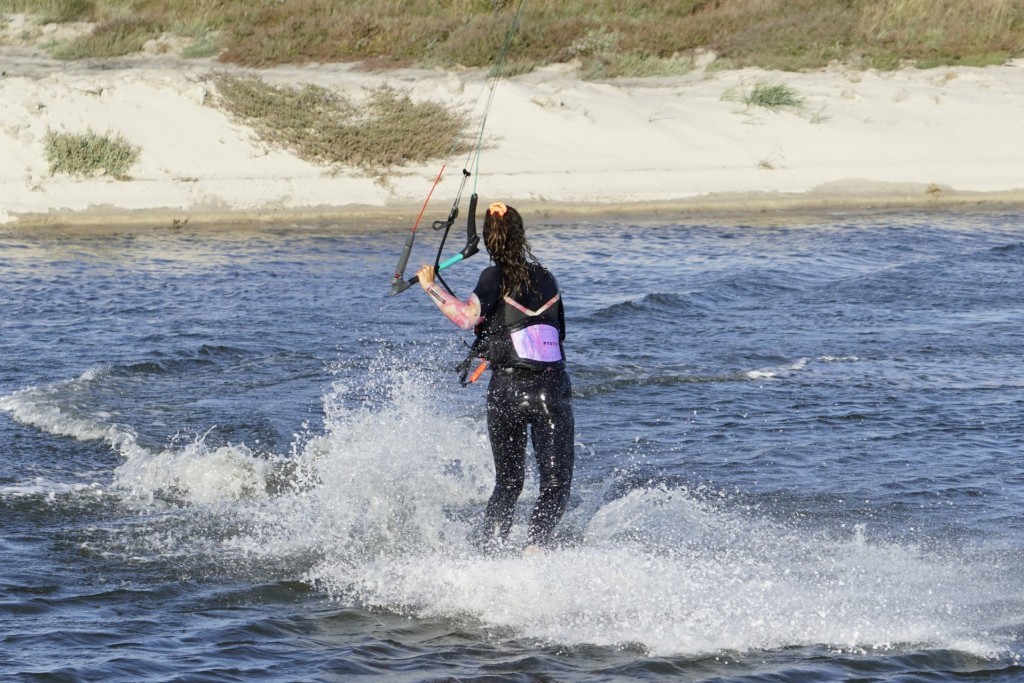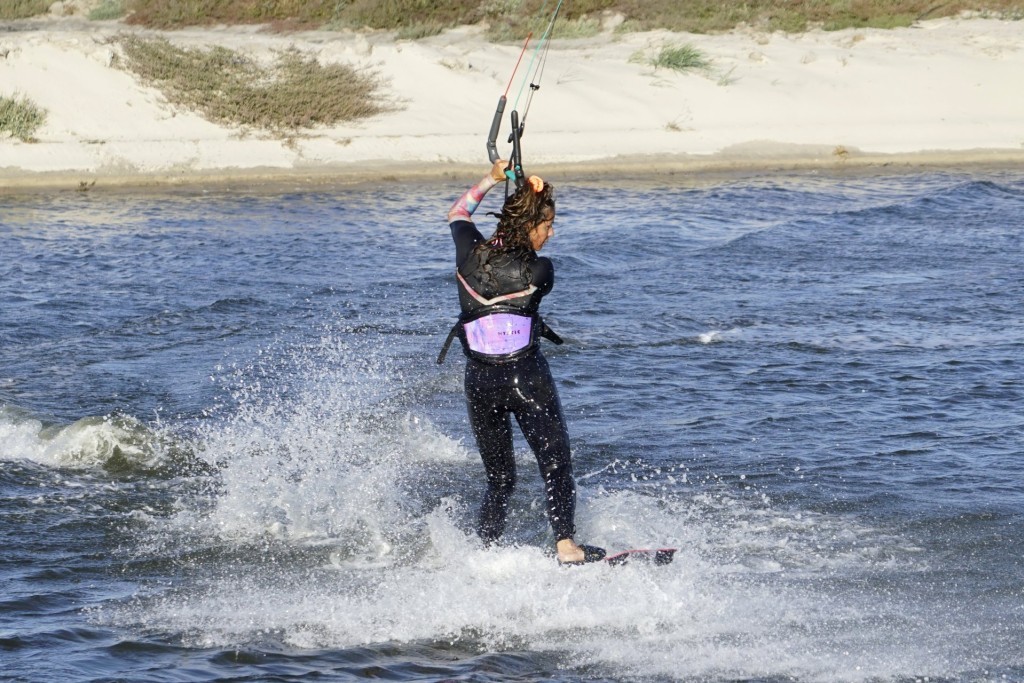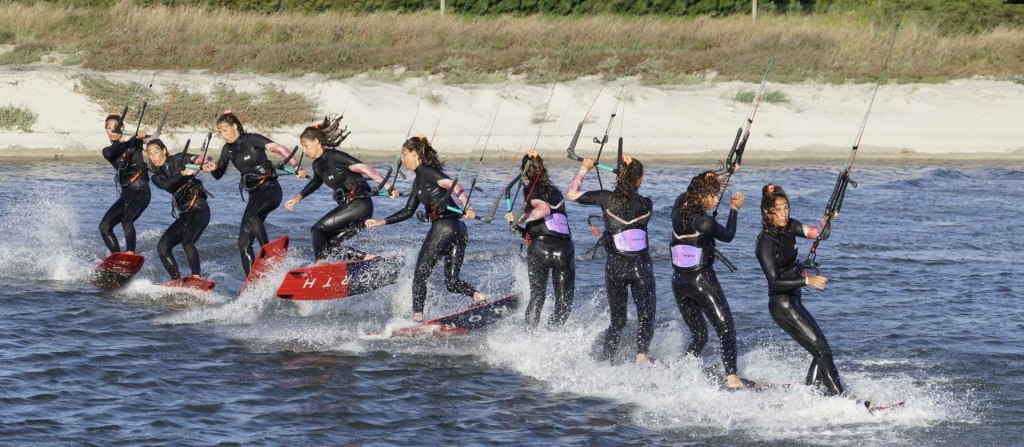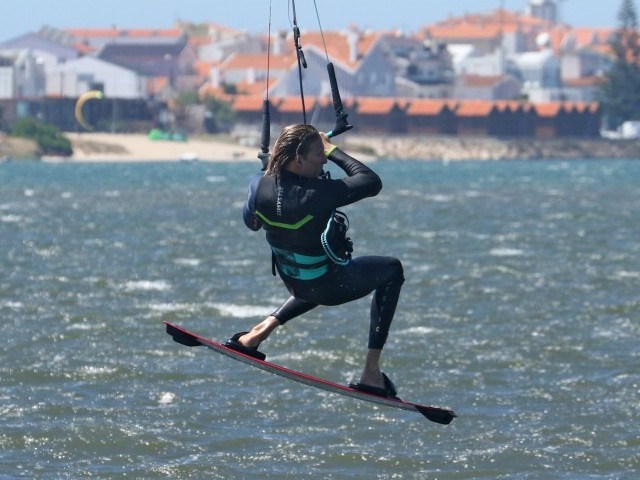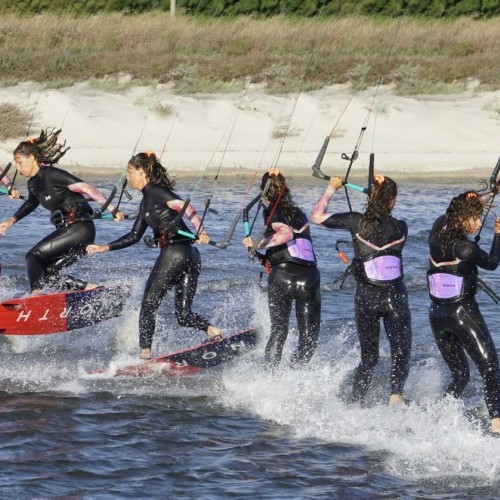
Hooked Toeside Pop to Wrapped
Technique / Intermediate
Hooked Toeside Pop to Wrapped
Here’s a little something that you can wrap in colourful paper, tie up with shiny string and cover with festive bows. What more could you ask for under the tree than a finely polished Toeside Pop to Wrapped? This hooked in version is a brilliant starting point for getting to grips with wrapped.
If you’re unsure exactly what wrapped is, let’s walk through it. Imagine popping to toeside. Now from toeside, pop another 180 in the same direction so that you land on your heels. You’ve completed a full 360 in two halves and are now riding wrapped. The name derives from landing after this rotation unhooked, whether a 180 from toeside or a 360 from heelside, as the bar and the arm holding it end up wrapped behind you, with your hand twisted up in a form of a half-nelson! Fear not though, the beauty with the hooked version is that you can avoid any wrestling matches by keeping the kite high, and your harness will take any power.
So why wrapped? The very same question gets bandied around for blind. Wrapped is a way to land, so you can add it onto a lengthy list of tricks to spice up your session. It’s fun, feels brilliant and looks pretty special too. It provides the very same mustard on an equally complete list of unhooked moves. AND if you’re dreaming of moving towards air passes, it’s an essential skill for the likes of a Back Mobe, 313, and Slim Chance, but to name a few. This particular pop from toeside is also a unique way to get back to heelside when you land toeside, a true pop out!
For this hooked in version to become a reality, all you need is a decent toeside, an ability to pop and a tablespoon or two of go for it. If you have tried or can ride blind, it’ll help your mind, as it won’t be the first time that you voluntarily turn your back on proceedings. Let’s have a look at the individual parts which you’ll need to focus on to stomp the whole.
Approach Pic A.
First off, this is all about speed. You need plenty. The reason being that you’ll not be popping from a toeside edge but a flat board pointing downwind. As you’re no doubt all too aware, once you follow your kite, you lose tension and slow down. And nothing is more challenging than popping a non-planing craft. This means that there are two possible approaches. One which you’ll be able to add at a later date is the baring downwind post toeside landing. It’s the perfect place for this. However, to start with, we recommend approaching with a fair bit of speed on a heelside edge and then switching very quickly to toeside so that you can use your momentum for the pop.
Looking at Karine, her kite is around the magical and mythical 1 o’clock, so she can get a good edge and build speed. Her hands are centred on the bar, and her sweet spot is trimmed into at least the middle of her centre line so that she has room to sheet out if needed. From here, she quickly moves her weight forwards and switches to toeside by lifting her back leg through—all the while keeping her torso stiff and weight upwind.
Carve Pic B.
As soon as your board is switching, you’ve started the clock. Time is not on your side, so you very much need to get a wiggle on. First job is to get the board bearing away, heading downwind towards your kite. This will make your landing simpler, as with the board off the wind, you’ll land more off the wind and keep your momentum to claim the wrapped. Normally as you switch to toeside, your weight will end up over your back foot. This is a good thing. With your weight on the tail of the board, you can lean on your heel and carve the board downwind. As you do this, level the bar to get your kite a tad higher, which will help later in the move.
You can see how Karine is carving on her back heel to point her board off the wind, and she has her bar levelled to inch the kite up.
Compress Pic C.
You need to pop, but as you’re popping off a flat board and not an edge, the bend you have in your back leg won’t be enough. This means you need to compress, coil those springs. Bend both knees while keeping your weight back over the tail of the board. To make this effective, you need to keep your shoulders in line with your hips so that your back shoulder can lean back, parallel to the board as the nose rises. This will only be possible if you’ve trimmed the bar in close enough. If you don’t, you’ll know because you’ll have to take your front hand off the bar. You don’t want to do that yet!
In the photo, you can see how Karine is compressing and leaning back over the tail of the board. Everything, from shoulders, hips and board, is parallel, both lengthways, along the board and also angled back with the board. Note how Karine’s kite is very high, a result of her levelling the bar and travelling downwind towards it.
Explode Pic D.
This is when you get the max from the previous stage. With your weight low and back, you have something to pop against, the tail of the board, which is between you and the resistance of the water. If your board is flat, you’ll just jump out of the straps. You want to give it everything, aiming for maximum height. The reason, because you will have already slowed down, and you’ll get a lot less than your effort deserves. Your aim is up. As tempting as it is, resist the understandable urge to start turning your body to wrapped. It’s very much two stages, up and then around. By concentrating on the up, you’ll get your board off the water, AND you’ll keep your body above the board. If you try and twist too early, you’ll get off-axis.
Karine clearly demonstrates the effort and the up. Everything is moving skywards as she extends her legs. She’s up and over her bar. Her head and shoulders aligned vertically over the board, between her feet. If you’re over the board now, you have a very good chance of landing over the board once you rotate.
Rotate Pic E.
Now you’re up, it’s time to get round. As you’ll be turning away from the bar, with your back to the kite, you’ll have to let go of the bar with your front hand. The crux here is to get the board far enough round. This means bringing your legs up and making yourself small. In this position, you can turn your head and shoulders. Getting the board round is very Street Fighter. Pull your back foot round under your derriere, as if you are standing on your front foot, spinning before kicking out in full Jean Claude fashion. This way, you can stay balanced over the board as you turn. The board will lead the way.
Karine is turning her back on the kite whilst rotating around her front foot, forcing her back foot and the board around towards downwind.
Touch Down Pic F.
If you’re used to landing blind, the same principle applies here. Get the new tail of the board down first. This way, as it hits and grips, it will pivot the rest of the board further around, and you’ll end up far enough downwind not to catch an edge even if you didn’t get far enough in the air! As long as you’re up over the board and your back foot is tucked under your bum, this will happen. It’s worth pointing out here that if you tried to rotate immediately as you took off, and therefore turned off-axis, you’ll land heavily on your toeside edge and stop.
You can see Karine’s new back foot hits the water first, whilst her other foot and the board remains high. This way, the board will turn fully downwind. You can clearly see how the board led the way. As her board lands, Karine’s head and shoulders have yet to make it around. This isn’t from lack of effort. From take-off to touch down happens in a split second.
Stomp It Pic G.
This is the result of being over the board and keeping that back foot up. The board strikes, turns downwind, and you end up standing over the board and moving in what feels like reverse. However, you are looking the wrong way, and your weight is on your toes. This means that there is the possibility that the board can turn back again, and you’ll put tension on the lines. With the kite pulling, it will be impossible to get the bar back where it belongs.
Karine is on her board and moving – backwards. 🙂
Wrapped and Ole Pic H.
You need to get your weight onto your heels and the bar back where it belongs, in front of you. This is the main difference with the hooked version of wrapped. If you have the kite low, you’ll experience wrapped, but, being hooked in, you can’t pass the bar out of it, it has to go over your head, Ole styley. Hence you need it high. Your solution to this dilemma involves turning your head and pushing the bar up. When you turn your head, your weight will drop onto your heels, the board will bite, you’ll see where you’re going, and a smile will start to spread across your face with the wonderful realisation that you’ve oh-so-nearly made it. By pushing the bar up towards your kite and with your face turned, you can now bring your arm and bar across so that it’s downwind of you. This up and across is, in fact, a legit Ole!
Here Karine pushes her bar up and turns her head. Her weight transfers onto her heels, she can see where she’s going, and with her kite high, she’s able to bring the bar across and around. Bingo!
Top Tips
It never hurts to walk and jump through a new trick a few times on terra firma to get a good idea of what’s going on.
You really don’t have a lot of time in this trick. Practising switching to toeside, carving off and immediately popping will be time well spent. Without this stage firmly in the bag, you’ll struggle to get to wrapped.
Not always easy to find, but flat water will make this more achievable. The choppier it is, the quicker the board slows, and the more rapid you have to be.
Common Problems
No pop. Losing too much speed, work on your switch-carve-compress and stamp. Needs to be happening nearly as quickly as you can say it.
Coming out the foot straps. Sure sign you’re trying to rotate before you’ve stamped off. Make sure your weight is back so that you have something to pop against and concentrate on two movements. Explode up, then turn.
Landing hard on your toeside edge, sinus rinse. Due to an off-axis rotation. Keep your head and chin up. This will help keep you over the board. Keep your back foot up so that you don’t land on all the board at once. And make sure it’s up and then around.
Can’t Ole the bar over your head. Most likely that the kite is too low, so you really are wrapped. Make sure the kite is high. With the board moving towards it and not tension in the lines, it will be easier.
Keystones
- Speed to toeside
- Carve downwind, kite high
- Compress whilst leaning back
- Up, then around, back foot high
- Turn head, bar up, and Ole
This technique article was in Issue 90 of IKSURFMAG.
Related
By Christian and Karine
Christian and Karine have been working together as a coaching team, running improver to advanced kitesurfing clinics since 2003.





